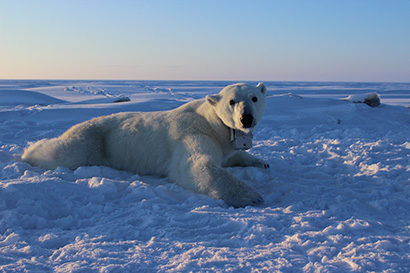By Eileen McCafferty “They made money their God…it’s not mine. I know what I’ve been taught. It is our Mother Earth that is the law.” -Michelle Cook, Dine, Human Rights Lawyer When the United Nation holds its United Nations Permanent Forum on Indigenous Issues, a two-week session in which indigenous peoples are given the political floor of the United Nations to discuss their issues on land, resources, and territories, it provides no room for public attention on these issues. In order to be present, you must get approval and a pass, go through tight security and the process is nearly sealed tight.
In the midst of all the meetings inside the government buildings of the United Nations, WE CAN (Women’s Earth and Climate Action Network) provided a public forum for seven women to tell their stories and spread their environmental agenda. The event was held April 18 at the Scandinavian House, several blocks from the UN’s political rooms.
This conference offered two panels of women from various sectors of the United States and the world, who shared different stories. Yet their main message was unanimous: saving indigenous women from being cast aside and pushed to the brink of extinction will save our planet.
The first panel of women were four Native American women, the youngest fourteen years old, all whom have been fighting for Mother Earth. Kandi Mossett who identifies as Mandan, Hidatsa, Arikara from North Dakota was the first to take the mic. She talked about how she has watched her ancestors’ land be destructed by fracking and how the federal government has taken over half the land that was “set aside” for Native Americans. The government sold this land to hydraulic fracturing companies. Kandi said that fracking is what she believed gave her stage four cancer, which she thankfully beat, but it also gave cancer to several of her friends. While their cancers were a less severe stage than hers, they did not survive.
Michelle Cook, a Dine (or Navajo) human rights lawyer from Louisiana, took the podium next with the message of how we need to divest from banks and companies that promote fossil fuels and mistreatment of the earth. LaDonna BraveBull Allard is a Lakota historian who shared her message of a grandmother; she said she fights for the rights of her grandchildren. Two of her nineteen grandchildren developed lead poisoning and while they have almost successfully removed all the lead from their bodies, she still fights for them, “because that’s what grandmothers do,” she said.
The last speaker of this panel was fourteen-year-old Tokata Iron Eyes, who has been speaking in front of people since she was nine years old, including protesting at Standing Rock. With tears filling her eyes, she stated that Mother Earth is the most important thing. It kills her everyday to watch her land change and she wants to be able to allow her future children to see it. Her message preached that Indigenous women have always been the care givers, and they are the ones who tend to the crops and built the houses. Women, she said, are natural at care and we need to care for our Earth.
The second panel was a group of international women. Two came from the Ecuadorian Amazon, Gloria Ushigua and Miriam Cisneros, both women leaders of their tribes. They discussed how in the Amazon, women who are speaking out against the destruction of the rain forests are receiving death threats. The forests that provide life are being destroyed in order to provide the world with oil and lumber. However, a historical event happened in the Amazon where hundreds of women from the Amazon sat around the capitol in Educador demanding the president sit with them. For five days, women discussed, debated, argued, laughed and cried about the environmental issues that the Amazon faces. After days of waiting, the President agreed to sit with 12 leaders for 30 minutes. When the meeting happened, he was there for an hour and half. The leaders made him cry with their powerful message of saving the planet.
Another special presenter was Ramapo College Professor Thilmeeza Hussain. She is a former Deputy Ambassador to the UN from the Maldives, and the Founder of Voice of Women, Maldives. White sandy beaches cover the Maldives, and now with climate change and sea levels rising, the Maldives and other island nations are experiencing mass changes in their habitats. Thilmeeza preached how climate change needs to be handled, because so many people who reside near the sea will be displaced or lost within the next several decades.
Women, she said, are natural care givers: mothers, wives, friends, etc. We are like water. We provide life. Indigenous women whose people make up roughly 1% of the population sit on one-fifth of the natural resources of our world. It is important that we protect the people who have already suffered so much for the sake of providing people with oil.



/https://public-media.smithsonianmag.com/filer/cf/cc/cfcc0f3f-fb25-43d9-a867-7d21dbac2529/giraffe.jpg)